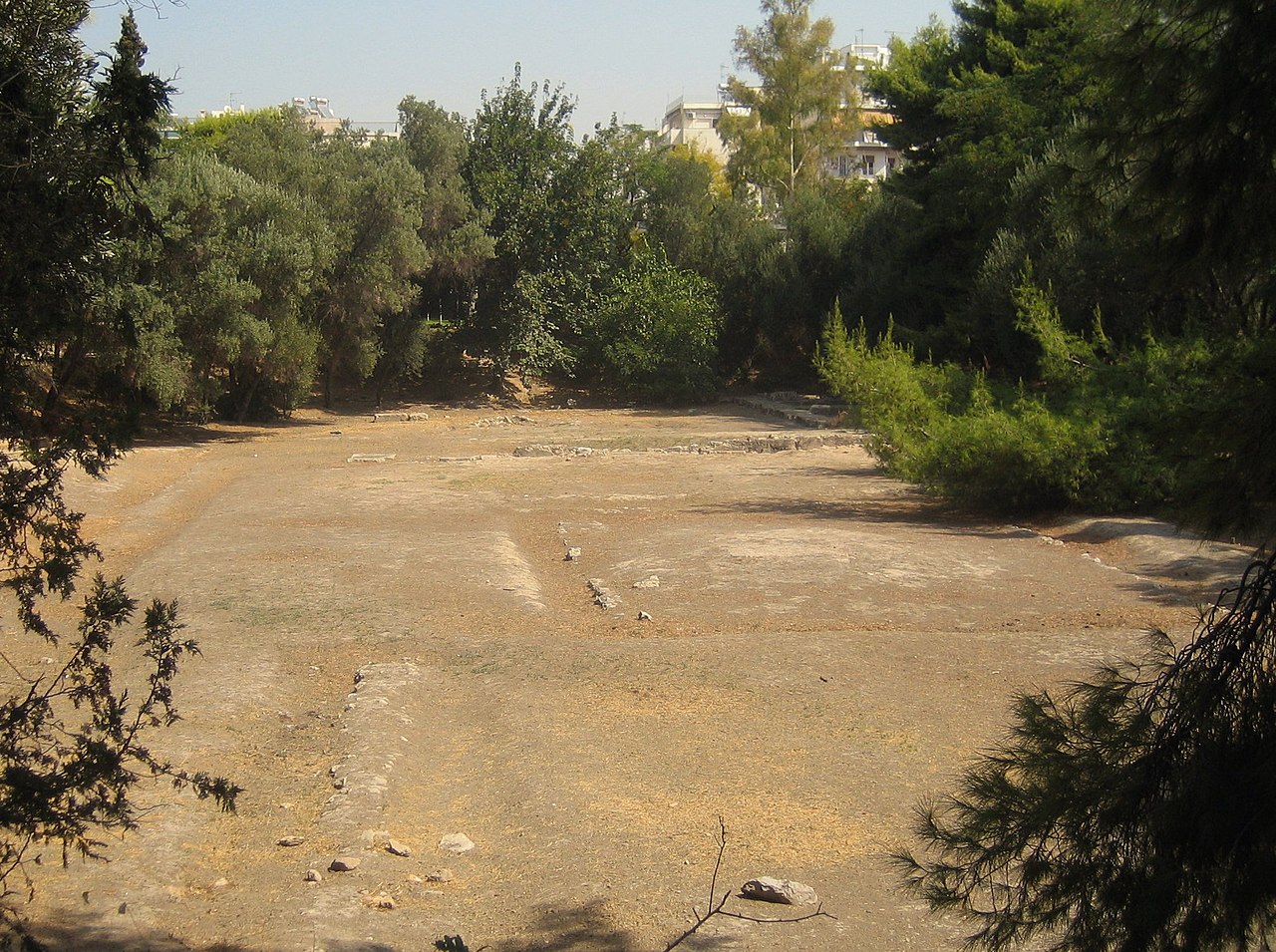"The Academy", or, The Platonic Academy, was perhaps the most famous school in ancient Greece, founded in Athens by Plato in 387 BC on the northwestern outskirts of Athens.

The site, outside the city walls, acquired its name from the legendary hero Academos.
Plato is the one figure who must receive the credit for giving birth to this unique institution. He firs acquired the land on which the Academy was eventually built, and began holding informal gatherings there to discuss philosophical issues with some of his friends.
The gatherings included thinkers such as Theaetetus of Sunium, Archytas of Tarentum, Leodamas of Thasos, and Neoclides. These meetings and discussions continued for years but it was not until Eudoxus of Cnidos arrived in the mid-380’s BC that Akademeia was recognized as a formal Academy.
The Platonic Academy is considered the world’s first university
The Platonic Academy was not an educational institution as we know it in modern times, but because it had the characteristics of a school and covered a wide variety of topics such as philosophy, astronomy, mathematics, politics, physics and more, it is considered to be the first university in the entire world.
The garden which Plato decided to use for his discussions had also been used previously by many Athenian groups, both civil and religious, with the Akademeia hosting a nighttime torchlight race from altars in Athens to the altar of Prometheus in its gardens.

The road that led to the University was also lined with the gravestones of many Athenians, and funeral games took place there, along with a Dionysian procession from the city of Athens to the site and then back into the city.
An exclusive group of intellectuals met in Akademeia, with Plato’s “students” not truly bearing the title of a student apart from their distinction between junior and senior members of the body.
One of them, Aristotle, came to be one of the world’s most influential philosophers of all time.
The teaching methods used by Plato, including both lectures and seminars, focused on his instructions, in addition to dialogue between teachers and students.
According to an unverifiable story that has become a legend throughout the centuries and into modern times, the Academy had the phrase «Μηδείς αγεωμέτρητος εισίτω μοι τη θύρα» inscribed above its entrance, a phrase which means “Let none but geometers enter through this door.”
The Academy was free
It is worth mentioning that during Plato’s leadership of the Academy, its members did not pay any fees, and following his death, the Academy continued its operation for nearly 200 years.
Diogenes Laertius, a biographer of ancient Greek philosophers, divided the operating history of the Academy into three periods; The Old, the Middle, and the New. At the head of the Old he naturally placed Plato; at the head of the Middle Academy, Arcesilaus; and of the New, Lacydes.

In the year 86 BC, Lucius Cornelius Sulla, a Roman general and statesman who held the role of consul twice and revived Rome’s dictatorship, laid siege to the city of Athens and conquered it. The Academy was destroyed and razed to the ground.
Tragically, the magnitude of the destruction was so massive that the school never reopened. Still, the legacy of The Academy has stayed alive throughout the millennia, giving us vital knowledge and insights even today about the world in which we live.

READ MORE: The common Ancient Greek and Celtic origins of St. Patrick’s Day.


